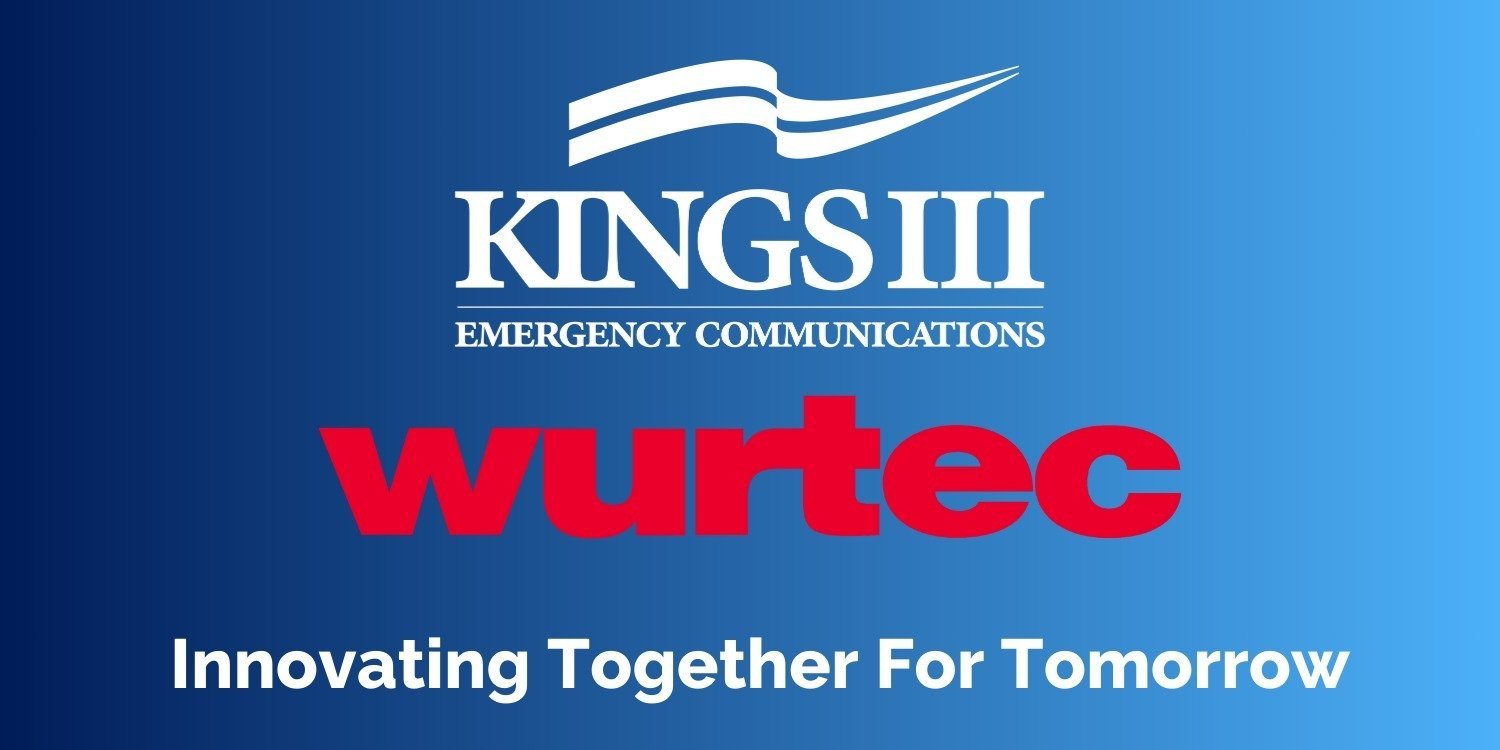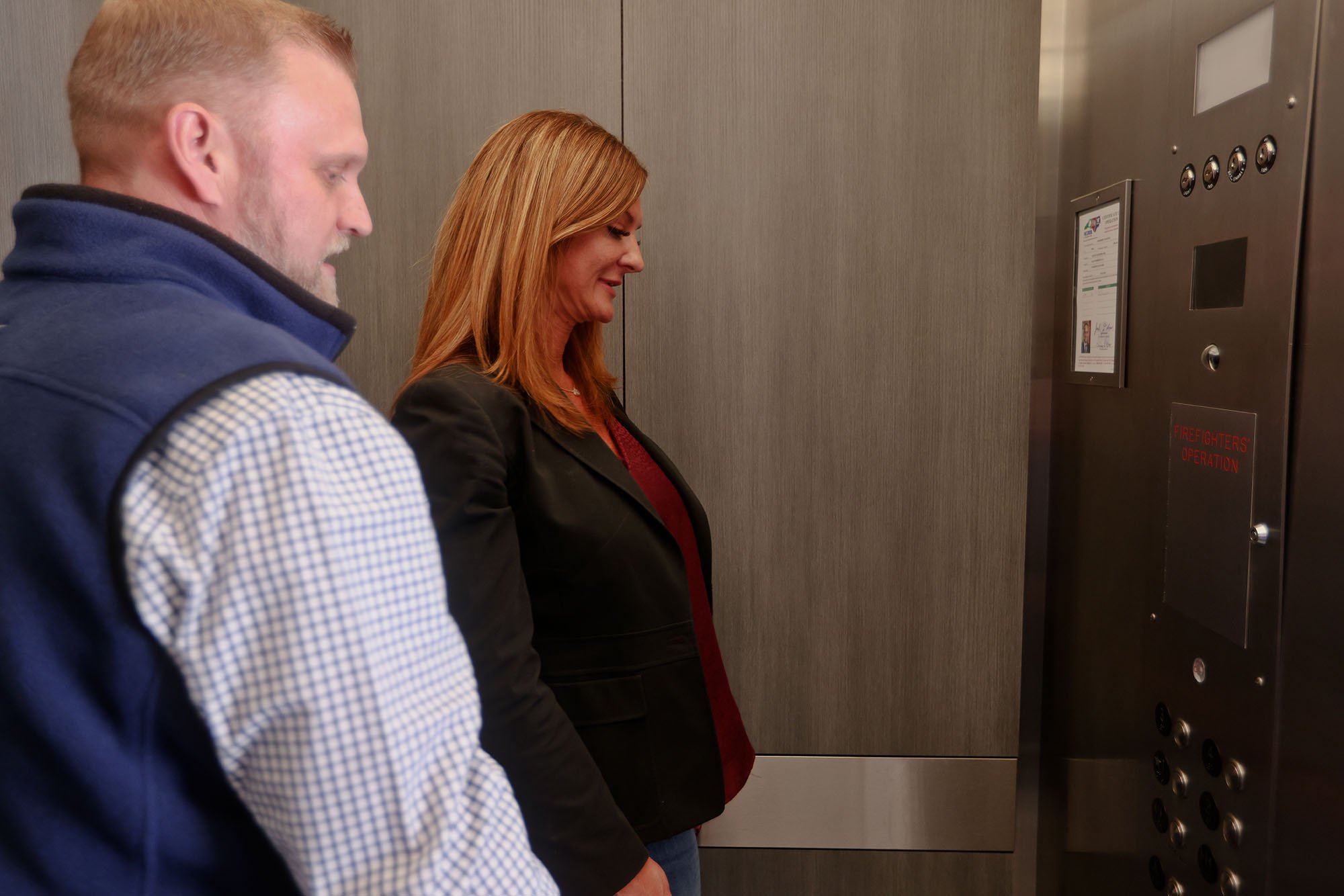BLOG CATEGORIES
Updated Elevator Code: Who are my Authorized Personnel?

Few responsibilities carry as much weight as ensuring the safety of every individual who steps onto your property, and as you know, your elevators are a crucial area to prioritize when it comes to life safety.
Find out how to improve safety and reduce costs at your property
Our best-in-class emergency phone + monitoring solutions provide peace of mind and are backed by decades of expertise
Learn More
2024 ELLIES WINNER
Best Supplier -
Communication System
A New Era of Inclusive Safety
Driven by a commitment to building safety, the recent updates to ASME A17.1 (2019+) introduce significant changes regarding elevator emergency communications to help ensure that passengers can access crucial help in times of need. The updates aren’t just another set of regulations to navigate—they represent a paradigm shift in how we approach elevator emergency communications, one that demands our immediate attention and action.
The ASME A17.1 code updates were developed with accessibility for all in mind. They mandate a unified approach to emergency communications that combines audio, video, and two-way messaging capabilities. This isn’t just about ticking boxes on a compliance checklist—it’s about saving lives and ensuring accessibility for all.
The updated requirements empower emergency responders to:
- Visually assess situations, transcending the limitations of audio-only communication
- Establish direct, inclusive contact with all passengers, regardless of their ability to speak or hear
- Minimize false alarms, optimizing resource allocation and response times
In essence, these updates are a testament to our commitment to safeguarding every life, upholding human dignity, and ensuring no one is left vulnerable in an emergency, regardless of ability.
Decoding the Confusion: Who’s Really Authorized to Monitor Elevator Calls?
Elevator code is never elementary, is it? Unless you’re a qualified elevator inspector (like many of Kings III’s own personnel—wink-wink, nudge-nudge), navigating the elevator code, and especially the latest code updates, can feel especially murky.
As you’ve been familiarizing yourself with these code updates, your attention has likely been on the two big glaring differences: the introduction of video and messaging. Those are the true “bones” of the update within emergency communication, but as it typically goes, the devil is in the details. As we’ve talked among others in the industry, there seems to be a common point of confusion regarding authorized personnel, and who can monitor what.
Some building managers have explored partial implementations, such as:
- Having on-site security monitor phone calls while a separate service monitors video feeds, or vice versa
- Implementing only audio or only video monitoring
These approaches fall short of the code requirements and could leave you non-compliant and vulnerable.
Kings III has been consulting with elevator companies, AHJs, and customers since the updated code’s inception. We have a very firm understanding of its requirements and how to execute them, and we want to make sure we can help everyone get it right.
Breaking Down Authorized Personnel
ASME A17.1 updates introduce more than one means of connection between elevators and responders for the first time, which creates a clear need for unified monitoring. Section 2.27.1.1.1 states out the requirement for authorized personnel:
“A communications means between the car and a location staffed by authorized personnel who can take appropriate action shall be provided.”
The location staffed by Authorized Personnel must be able to monitor both the voice and video messaging portion required by code. These requirements are detailed in 2.27.1.1.3, further clarifying how authorized personnel must facilitate the voice, video, and two-way messaging.
This seemingly simple statement introduces a crucial change: the same authorized personnel must monitor all communication pathways- audio, video, and messaging. This unified approach ensures:
- Comprehensive situational awareness
- Rapid and appropriate response to emergencies
- Effective coordination with emergency services
The Imperative of Compliance
With over 75% of U.S. states already adopting a version of these code updates, compliance isn’t just recommended—it’s increasingly mandatory. But beyond legal obligations, there’s a compelling case for embracing these changes wholeheartedly:
- Risk Mitigation: Non-compliance exposes building owners and managers to significant liability risks.
- Ethical Responsibility: Ensuring the safety of all building occupants is a moral imperative.
- Future-Proofing: Implementing these changes now prepares your building for future regulatory landscapes.
Embracing the Future of Elevator Safety
As building management professionals, it’s imperative that you:
- Thoroughly review and understand the ASME A17.1 updates
- Assess your current emergency communication systems
- Implement compliant solutions that unify audio and video monitoring with messaging capabilities
- Ensure your solutions have appropriately authorized personnel to handle all communication streams effectively
Solutions like Kings III’s CabView offer a comprehensive approach to meet these new requirements. CabView provides integrated video monitoring capabilities alongside traditional audio communications, allowing authorized personnel to meet the unified monitoring requirements efficiently. It includes features like two-way messaging for hearing and/or speech-impaired passengers, aligning perfectly with the code’s emphasis on inclusive communication.
By embracing these changes, we’re not just meeting regulatory requirements—we’re creating safer, more inclusive spaces for all tenants. In doing so, we elevate our role from mere compliance officers to true guardians of public safety.
Kings III is committed to helping you implement these pivotal updates, ensuring that when emergencies strike, you’re fully prepared to respond—for everyone’s sake.
CATEGORIES TAGGED
CATEGORIES
KEEP LEARNING

Kings III Acquires LiftNet, Advancing Connected Safety & Remote Monitoring in Elevators and Escalators
Kings III Emergency Communications partners with Wurtec to enhance elevator video messaging systems, addressing new code requirements for two-way displays and video monitoring. The collaboration combines Kings III's emergency response expertise with Wurtec's industry solutions to provide streamlined, compliant elevator safety communications nationwide.

Is Your Pool’s Emergency Phone Compliant? Here’s How to Check (And What to Do If It Isn’t)
Is your pool’s emergency phone truly compliant and ready when it matters most? A reliable, code-compliant emergency phone is more than a regulatory requirement—it’s a critical lifeline that ensures immediate access to help during emergencies. This guide walks you through how to check compliance, properly test your phone, and take the right steps if it doesn’t meet current standards. Whether you're ensuring your current system is up to code or exploring a more dependable solution, we’ll help you navigate the process and safeguard both safety and liability.

8 Women Who Shaped the Future of Emergency Response & Dispatch
This Women’s History Month, Kings III is honoring the women who have paved the way in emergency response and dispatch. From breaking barriers in EMS to pioneering advancements in emergency communication, these trailblazers have helped shape the way lifesaving services operate today. See eight influential women whose contributions continue to impact the field and inspire future generations.

Honoring Black Pioneers: 7 Influential Figures in Emergency Communications & Response
This Black History Month, Kings III is honoring Black men and women who served as pioneers in the fields of emergency dispatch and emergency response. See 7 influential trailblazers who broke barriers, advanced life-saving technologies, and shaped the way emergency services operate today.

How Recent Spikes in Copper Theft Threaten Your Emergency Communication & What You Can Do About It
Rising copper theft is putting emergency communication systems at risk, leading to potential service outages. Without a reliable backup, property managers may face compliance issues and safety concerns. Learn more about the threat and how a cellular solution can help protect your property.

Is Your Hotel’s Emergency Communication System Up to Code?
Hotel emergency communication systems must meet strict safety and compliance standards, but are yours up to code? From elevator phones to pool and parking lot emergency call systems, we break down key requirements and how to ensure your property stays compliant.

Kings III & Wurtec Partner to Improve the Emergency Communication Market of Elevator Video Messaging Systems
Kings III Emergency Communications partners with Wurtec to enhance elevator video messaging systems, addressing new code requirements for two-way displays and video monitoring. The collaboration combines Kings III's emergency response expertise with Wurtec's industry solutions to provide streamlined, compliant elevator safety communications nationwide.

What an Emergency Dispatcher will Most Likely Ask You
When suddenly faced with an emergency, you may immediately feel frightened and helpless. An emergency communications system can help reduce or eliminate those reactions by providing immediate assistance. Here's what you can expect on the other side of a call you place from an emergency phone.

January 2024 Elevator Code Updates in Florida
Florida property managers have finally completed DLM requirements in their elevators (hopefully). But wait, there's more! Florida will adopt ASME 2019 starting January 1, 2024. Learn what this means, how you can comply, and get guidance from our code experts.




